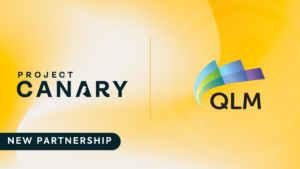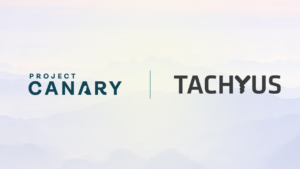Industrial Transformation Network
It’s been a big year for methane. The greenhouse gas has been increasingly recognized as a potent source of global warming and regulators and politicians are calling for more urgent cuts to reduce methane emissions globally.
Last year over 100 countries signed onto the Global Methane Pledge, an initiative that seeks to reduce global methane emissions by at least 30 percent from 2020 levels by 2030. Earlier this year, US President Joe Biden’s Inflation Reduction Act (IRA) proposed a methane emissions charge meant to offer further economic incentive to drive down emissions. Other countries and entities are announcing similar measures and targets.
The oil and gas industry accounts for a large proportion of global methane emissions. Methane is naturally released during the extraction of oil and is often flared or leaks into the atmosphere.
As pressure mounts to reduce methane emissions, the oil and gas industry is under increasing scrutiny. UN Chief Antonio Guterres recently accused the fossil fuel industry of “greenwashing” stating that “the criteria and benchmarks for these net-zero commitments have varying levels of rigor and loopholes wide enough to drive a diesel truck through.”
As another UN climate summit has come and gone, how can the oil and gas industry take their methane mitigation efforts to the next level to ensure their measures amount to more than greenwashing?
Tanya Hendricks, Chief Commercial Officer at Project Canary, an environmental data and software company, says that there are a number of levers at the disposal of operators that start with the accurate measurement of existing methane emissions.
“Having a more detailed understanding of the source of emissions gives companies a measured value that lets them track improvements and compare what happens when swapping out equipment, for instance, to a baseline of what was happening on the well site prior to the change,” she explains.
In this interview, Hendricks, comments on the accusations of greenwashing, offers her advice to operators looking to get started with methane mitigation, and gives insights into how operators can take their efforts to the next level.
Diana Davis, IX Network: UN Chief Antonio Guterres recently made some comments around “greenwashing” in the fossil fuel industry. What’s your take on this notion of greenwashing in oil and gas?
Tanya Hendricks, Project Canary: It seems like the concern is around those who had put out targets but didn’t yet have a specific plan for achieving them, however, companies haven’t missed their targets yet. These are future goals. We work with a lot of customers who take their climate commitments very seriously, and they are working actively to fulfill them. They are tracking emissions to determine where to make capital investments to reduce emissions. For example, we’ve seen millions of dollars invested in switching from fossil fuel-driven pneumatics into air pneumatics.
There are ambitious net-zero goals, but it seems premature to start disparaging oil and gas companies for greenwashing when they’re actively working on how to meet these targets.
Diana Davis, IX Network: How is Project Canary helping organizations with some of those commitments?
Tanya Hendricks, Project Canary: We help in several ways. We have sensing devices that we’ve installed in the field to monitor, measure, and quantify emissions. That helps with sizing the problem, identifying common trends across a site or series of sites, and identifying the source of emissions.
A more detailed understanding of emissions allows companies to track improvements and compare changes (for example, swapping out equipment) against a baseline of emissions on the well site prior to the change.
We also help drill into the emissions profile so that operators can see the emissions caused by certain activities performed on the well site.
For example, we had a company that changed completion techniques because they saw that emissions would spike during completions. They figured out what caused that spike and were able to eliminate it. But if they didn’t have equipment that was measuring and monitoring emissions, they wouldn’t have even known there was a problem.
We also conduct environmental risk assessments. If an operator goes through an environmental risk assessment and their gas qualifies as “responsibly sourced gas,” companies can differentiate themselves. They have proof that they are responsible operators that they can take to the market. That creates economic incentives for producers beyond just hitting their targets; it gives them competitive differentiation.
There is more and more momentum for differentiating gas in the market. As the registries for certified gas expand their offerings, the market gains liquidity and transparency, and I think we’ll see this continue to push forward.
Diana Davis, IX Network: You’re sponsoring our Methane Mitigation and Measurement Summit next week. Can you tell us more about your technology for measuring and mitigating methane emissions?
Tanya Hendricks, Project Canary: Two things differentiate us from other types of technologies.
The devices we put on the well pads have a very sensitive detection threshold. We can detect a much lower leak rate than camera-based technologies, such as leaks from a valve that might not be fully sealing.
This gives operators a more holistic picture. As our technology is on the ground 24/7, it also gives a more accurate picture than a satellite or a flyover.
Gathering high-fidelity data is the first step. But the next step is what we do with the data. We have an algorithm built on top of the data to measure total site emissions. We aim to present a complete picture of all emissions; we don’t just want to quantify leak events.
Project Canary can provide a holistic picture and attribute emissions to the source equipment. We can, for instance, identify that 50 kilograms of methane over the past year has come from your tanks. Operators use this information to make better decisions around improving their facility designs and operations.
Diana Davis, IX Network: What combination of technologies do you see responsible producers using most effectively to monitor their methane emissions? My understanding is that generally you need a recipe of technologies in order to get the most effective measurement.
Tanya Hendricks, Project Canary: Recipe is a good way of putting it. The recipe that you need to measure and track methane emissions is not an exact science. It will depend on your asset profile, your well locations – we see different emission behaviors in different parts of the country and in different climates – and whether you have mainly horizontal wells on paths that are very concentrated versus coalbed methane wells, which may include thousands of individual vertical well sites spread across a broader area.
We usually see a combination of ground-based sensors combined with episodic aerial measurement to fully cover the assets.
Diana Davis, IX Network: For those companies that are looking to get started tracking and mitigating their methane emissions what’s your advice on how they should approach this?
Tanya Hendricks, Project Canary: We suggest trying several different things. Start by looking at your asset profile and figuring out what different types of populations you have. What are your well vintages? Are your wells vertical or horizontal or a mixture? Do you have centralized tank battery facilities that will have a different emissions profile than well sites?
You want to test the technology in each asset category to maximize learning and consider using a combination of flyover technology and ground-based technology.
We are working with one operator who is piloting seven technologies simultaneously on their well pads. They’re testing these technologies to learn as much as they can in six months about the strengths and weaknesses, the pros and cons of all these different approaches. That will help them figure out what their recipe should be going forward across their assets.
I’d encourage all operators to take the opportunity to test and learn, even if it’s just putting technology out on a few well sites and looking at the information you get back. There will always be insights from the data.
Diana Davis, IX Network: So, effectively operators should focus on the areas where there’s going to be the biggest bang for the buck?
Tanya Hendricks, Project Canary: Yes. This is especially important when considering 24/7 monitoring because this technology is more expensive. You can prioritize locations for 24/7 monitoring where leaks carry the greatest risk and use flyovers for lower-producing assets.
Diana Davis, IX Network: For those companies that are already fairly advanced, what’s the next step for them? How do they move their methane emission reduction efforts forward?
Tanya Hendricks, Project Canary: Some operators have done a fantastic job tackling the low-hanging fruit. Now they’re looking at what they must do next to reach their net zero targets.
This next step means broader design changes that are sometimes more feasible with new development, such as centralized tank facilities, closed-loop venting, and combustion of waste streams. Another is to utilize solar resources for onsite electrification. We’re seeing operators add solar panels to reduce reliance on grid power. It’s important to think about these approaches at the point of pad development. Finally, a number of operators are evaluating the role carbon capture and sequestration will play in their net zero or emission reduction strategy.
Diana Davis, IX Network: Do you have any final thoughts on how can the oil and gas industry take their methane mitigation efforts to the next level?
Tanya Hendricks, Project Canary: It is critical to remember that although we tend to think locally, methane emissions are a global problem. While it can be tough to drive collaboration, a global approach is where we will get the biggest bang for our buck.
The gas industry in North America already produces gas more cleanly than many other countries; we also know that we’re going to need fossil fuels for quite some time. Monitoring and methane mitigation help make North American gas even better and gives us a competitive advantage to export a cleaner fuel to fulfill global demand and reduce coal consumption. This will move the needle on a global scale to fight climate change.


